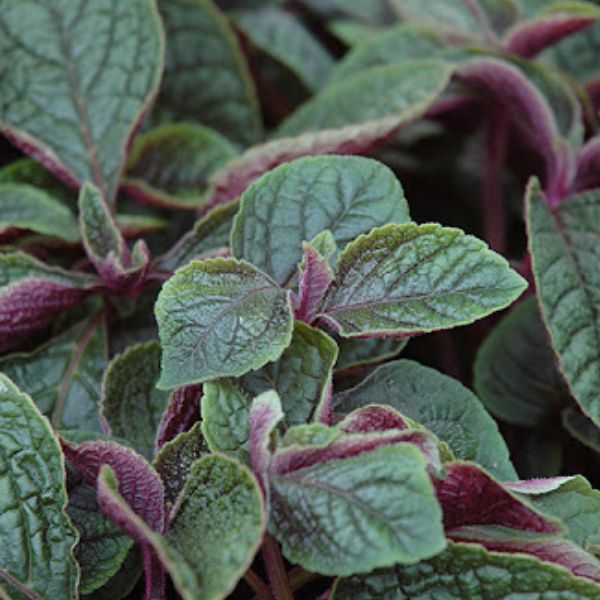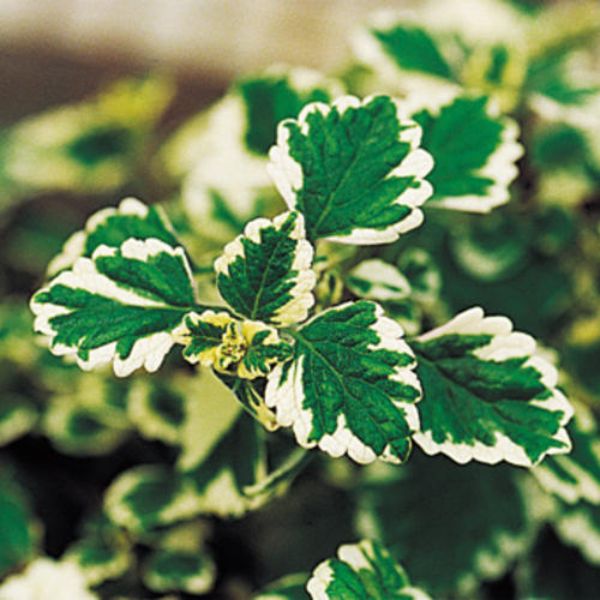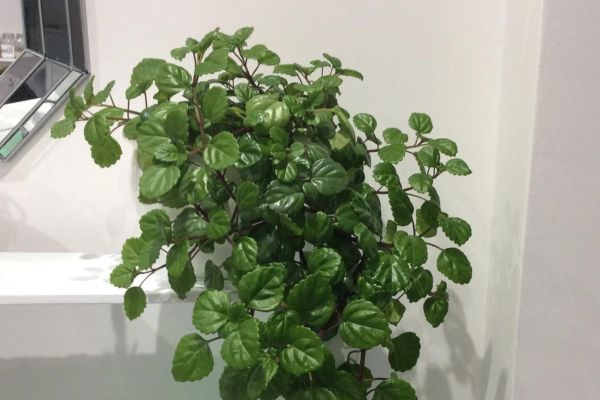Swedish Ivy, scientifically called Plectranthus verticillatus native to Southern Africa is a robust plant doing well in indirect sunlight mostly cultivated as a hanging house plant. The glossy, round leaves of Swedish Ivy are grown in opposite pairs along its long branches. Furthermore, the leaves produced by this plant are usually bright green in color, though there are multicolored kinds with cream or yellow lines.
To maintain the health and beauty of your Swedish Ivy in your house, here through this article, we will discuss in detail all you need to know about growing and caring for Swedish Ivy.
Swedish Ivy Flowers
Plectranthus verticillatus, or Swedish Ivy is mostly planted for its attractive leaf more than its flowers. On the other hand, Swedish Ivy can provide tiny, tubular flowers in white, lavender, or purple depending on its growing conditions.

Usually, these flowers are not very visible and appear mostly over the growing season in the spring and summer.
Swedish Ivy: Proper Growth and Care
1. Select the Correct Location
For better growth of any plant, you should choose the appropriate location. As this plant does well in bright indirect light, make sure to keep it in a location that receives indirect light, like placed close to the window. Dont keep it in direct sunlight, as it can burn your leaves. While they can tolerate some early morning sun, protect them from strong afternoon light.
2. Proper Soil
Well-draining soil that maintains moisture without becoming too wet is best for Swedish Ivy growth, also to benefit more use a high-quality potting mix meant for indoor plants or a mix of vermiculite, perlite, and peat moss. To avoid root rot, you need to have good drainage.
3. Watering
While watering, check the moisture level of the soil i.e. when the top inch of the soil feels dry, you should water it, however, do not wait till the soil dries completely. Both Overwatering and underwatering can damage your plant. You will need to water your plants less if you notice yellowing leaves which means you have overwatered them. If you are not providing enough water to your plants, then the leaves will start to droop and feel stretchy.
4. Fertilizer
You will need to fertilize your plant every four to six weeks during the growing season i.e. Spring and summer, with a balanced liquid fertilizer for healthy growth and beautiful leaves. Over-fertilizing your plants can burn or damage the roots of your plants. Moreover, fertilization is not much needed during fall or winter.
5. Pruning and Mainainence
Pruning is important to give your Swedish Ivy a bushier and healthier look. For better branches, and to avoid the plant from being overgrown, pinch back the growth tips on a regular basis.
6. Repotting your plant
Spring or early summer is the best time to repot your Swedish Ivy, however, avoid reporting during winter. While repotting, select a pot making drainage holes. Before repotting, water your plant a day before as it loosens the roots of plants so that you can easily remove it for repot.
Fill the pot with well-drained soil, and water your Swedish Ivy to help the new soil set, and moisturize the roots.
How to propagate Swedish Ivy?

Stem cuttings are a simple way to propagate Swedish Ivy, so here are some basics on how to propagate Swedish Ivy:
- Select a healthy 4-6 inch long stem from your Swedish Ivy, and look for a stem that has several nodes that are attached to leaves.
- After choosing the healthy stem, cut with pruning tools, or a knife, and trim out any leaves from the bottom of the cutting.
- Next, after your cutting is ready, place it in a potting mix that drains properly, then, make a hole in the soil and insert the cutting.
- Thoroughly water your plant giving moisture for the growth of the root, water the plant till drains from the bottom.
- Lastly, keep your new plant in a well-lit area i.e. bright indirect sunlight location.
Understanding Varieties Swedish Ivy: Purple, and Variegated
Swedish Ivy, or Plectranthus verticillatus is a loved houseplant with beautiful leaves, there are various kinds of Swedish Ivy with interesting colors and designs like purple and variegated which have traditional solid green leaves.
1. Purple Swedish Ivy

The leaves on this species have colors that vary from green to purple shade, depending on the plant’s health and light level. When paired with other houseplants, purple Swedish ivy gives a touch of vibrant color to interior areas.
2. Variegated Swedish Ivy

The leaves of variegated Swedish Ivy have contrasting leaves, normally a mix of green and white or cream, giving the leaf texture in a variety of patterns such as stripes or patterns.
Swedish Ivy Common Problems
Like any other houseplant, Swedish Ivy can have a few common problems, we have listed a few problems you might come across while growing Swedish Ivy:
Pest:
One of the common problems of Swedish Ivy is pest problems such as bugs, spider mites, and aphids. In order to stop the pests from spreading, treat infestation using neem oil, or insecticidal soap.
Fungal Disease
If the leaves of Swedish Ivy are kept wet for a long time, it can lead to fungal diseases like powdery mildew. However, if you see your plants affected with fungal disease, avoid keeping your soil waterlogged, and make sure the plant receives good air circulation.
Watering Problem
Overwatering and underwatering can both cause problems to your plants, where yellowing of leaves can show the overwatering, remove the yellow leaves to stop the problem from further spreading.
On the other hand, drooping or dying Swedish Ivy can be a sign of underwatering. Make sure your plant is neither placed in direct sunlight nor close to cold winds, also check the moisture of the soil, and adjust your watering routine.
FAQs
1. Is Swedish ivy toxic to cats?
Yes, cats and other animals can become poisoned if they eat Swedish Ivy, to avoid any health risk, keep it out of pets’ reach.
2. Why is my Swedish ivy turning brown?
Your Swedish Ivy can turn brown for many reasons like overwatering or watering, insufficient light, Nutrient deficiency, pest issues, improper soil, and many more.
3. What is Swedish Ivy used for?
Swedish Ivy is an ornamental plant due to its beautiful leaves and low mainatainence requirements and is a popular choice for hanging baskets and pots, both indoors and outdoors.
4. Does Swedish Ivy like sun or shade?
Swedish Ivy loves bright indirect sunlight and also does well in lower light conditions. However, a direct sunny shade might burn the leaves of Swedish Ivy.
5. Does Swedish ivy purify the air?
Yes, like many houseplants, Swedish Ivy can help in air purification, which can improve indoor air quality.
You may like to read more, How to Grow Nasturtium? Know Its Types, Caring Tips, Habitat and More!
